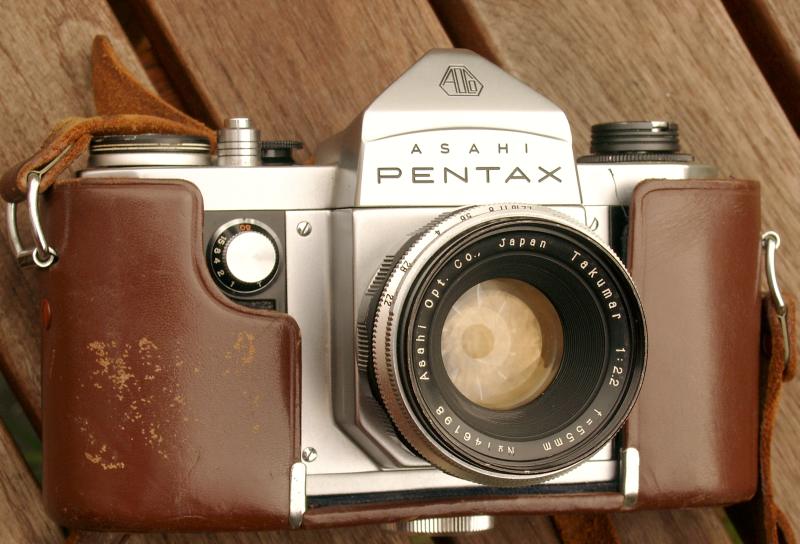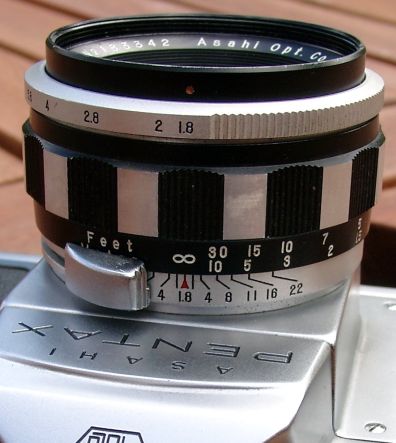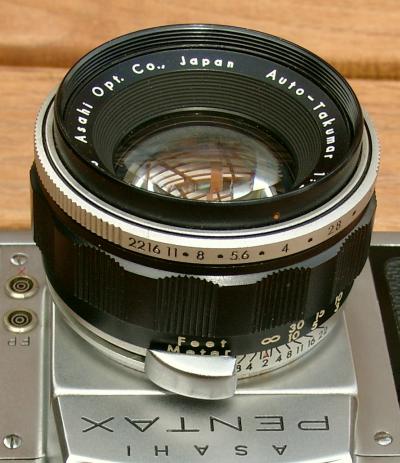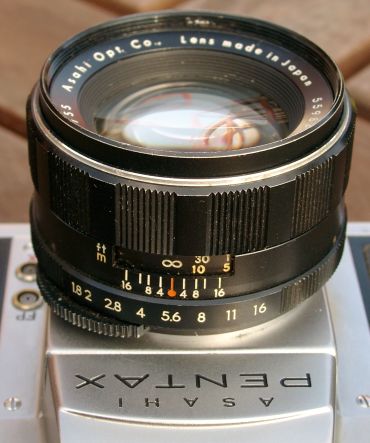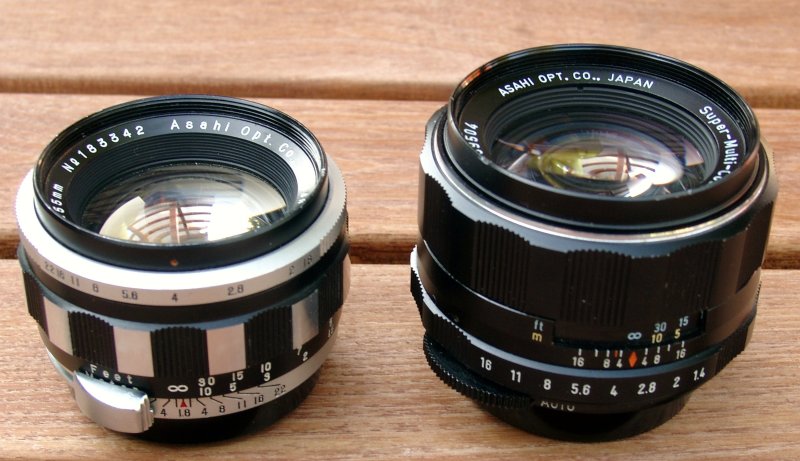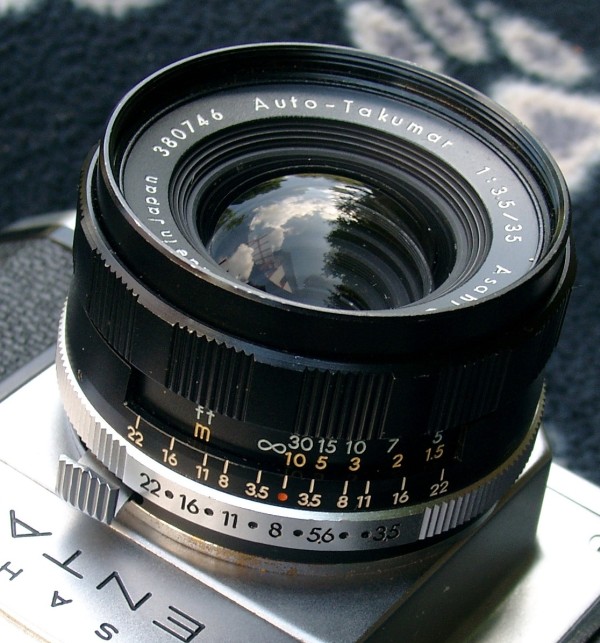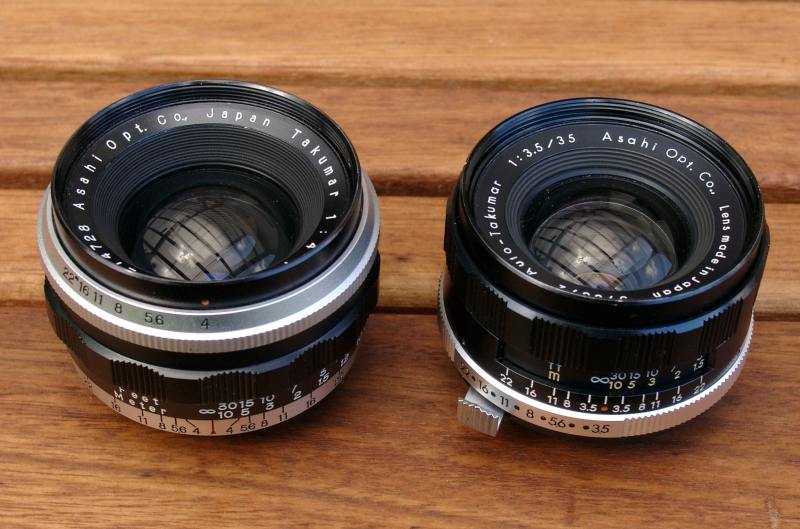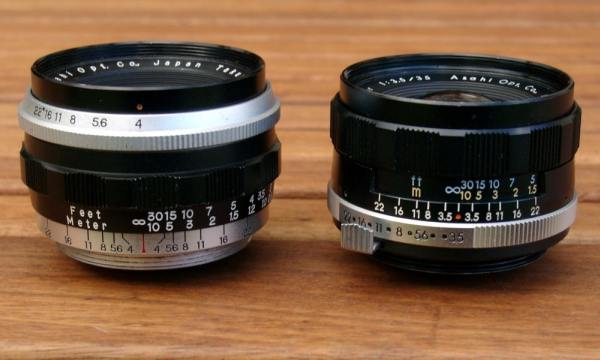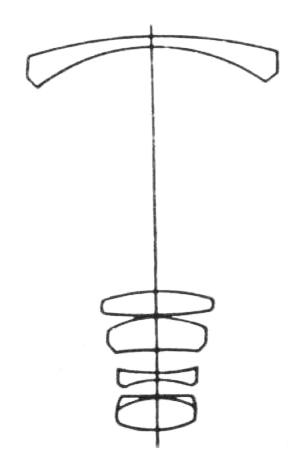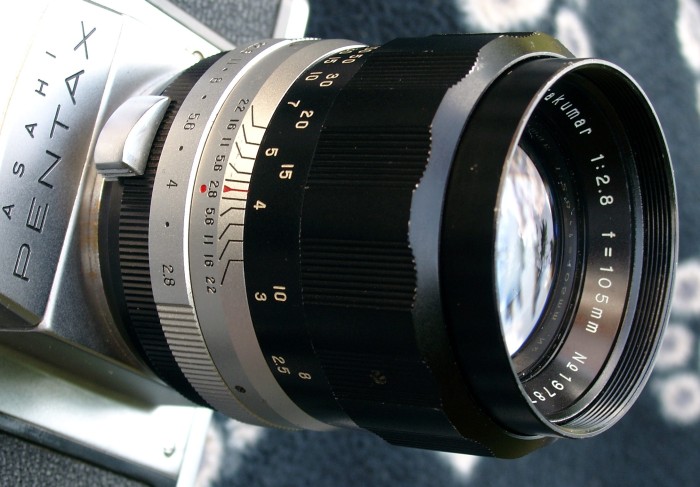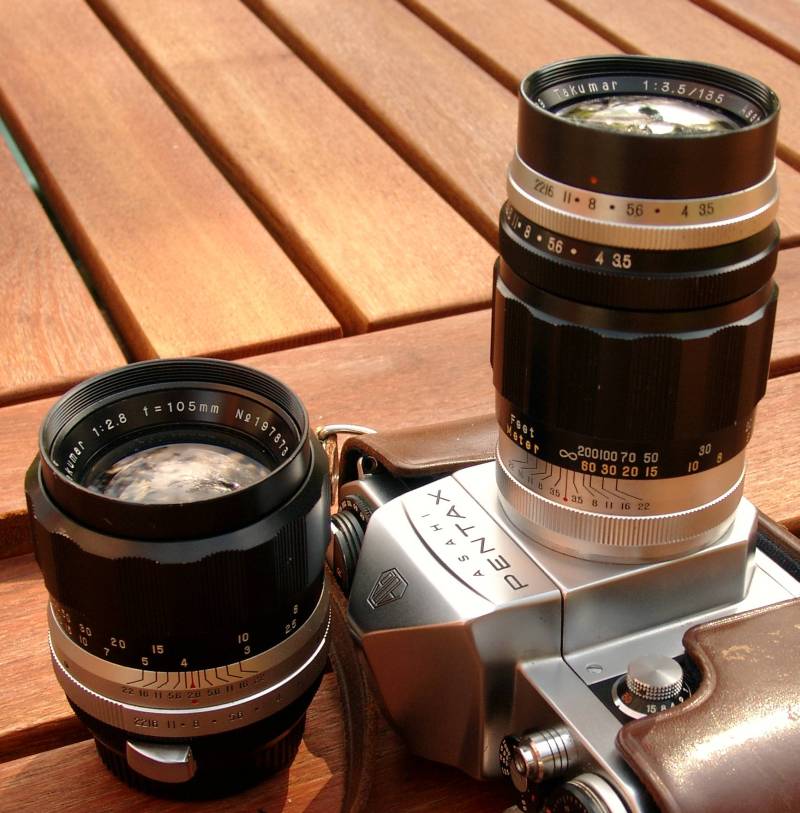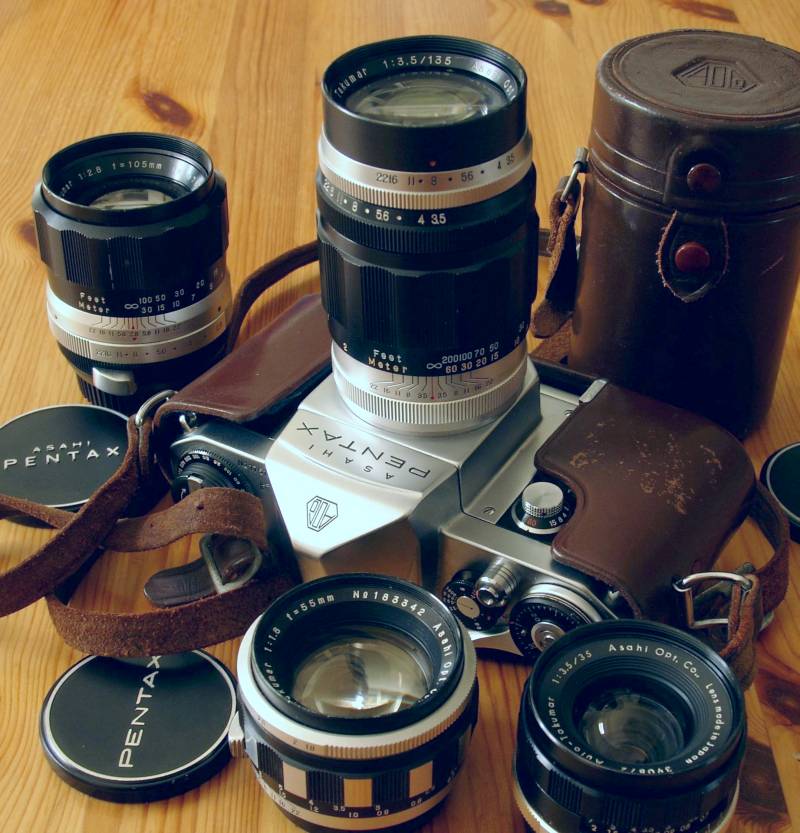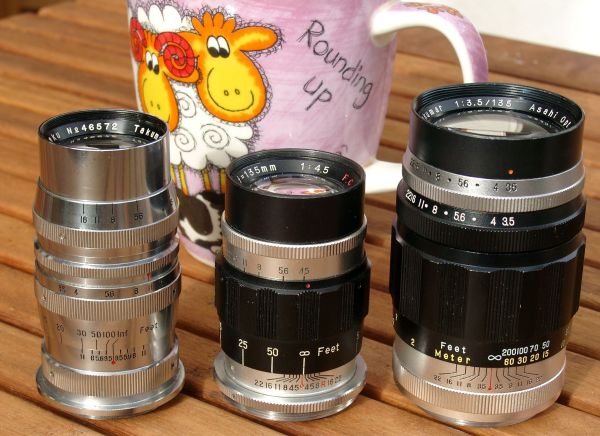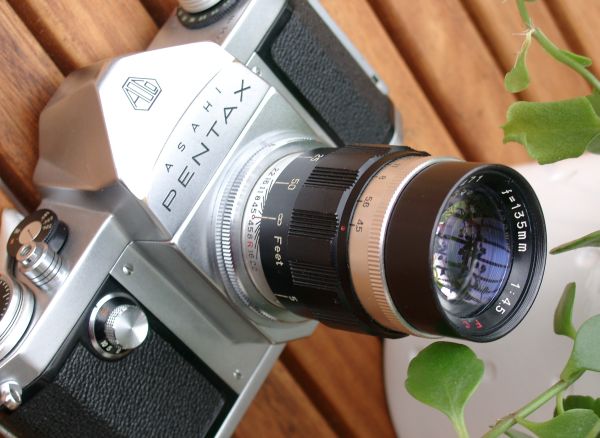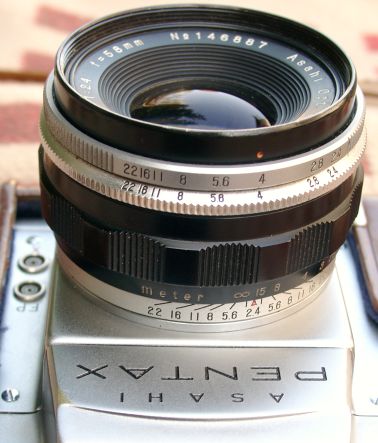
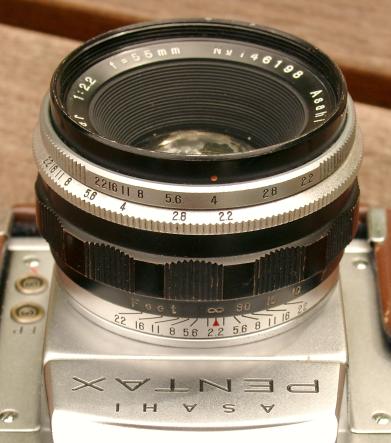
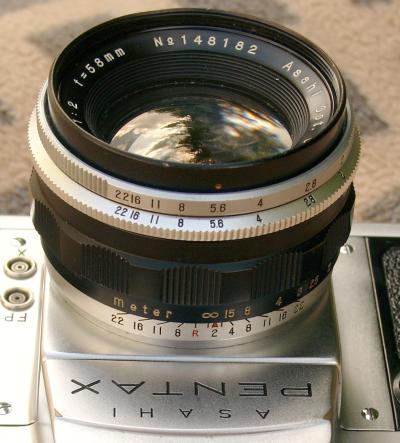
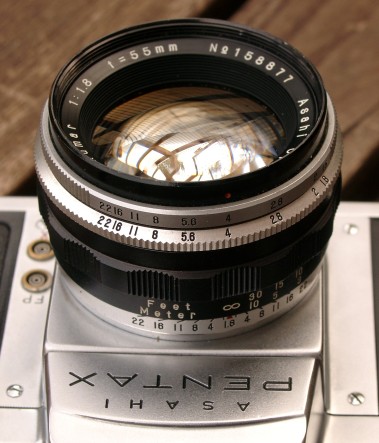
Comparing these pictures you can see that it's slightly longer than the other one with a thick (though not large) front element. 5 elements in 3 groups, you've got a classical Heliar type..! It speaks for Mr. Suzuki's - lens designer at Asahi Optical then - knowledge, or admiration for the German lens design that he took the famous pre-war Voigtlander large format portrait lens as a starting point to design Asahi Opticals first standard lens of higher speed for the "Asahiflex-II" in 1954.
There is no other Heliar type standard lens for 35mm still photo film that I know of, neither for SLR nor Rangefinder cameras, before 2001 Voigtlander/ Cosina made a remake with lower speed (f/3.5)
No cocking, no aperture pin, no automatic diaphragm on these early lenses! focussing scale either "meter" or "feet" according to market, never both. Be careful with these screw-mounts (alloy thread!)
This type was kept as the "cheaper" choice in production for 1958 (Pentax "S") in 1958, with dual scale (feet and meters) and higher S/Ns.
I found this one (with feet-scale) on a 1959 Pentax H2 - automatic diaphragm never worked with this preset lens in 46 years... I estimate contrast isn't up to later standards, due to its simpler construction. Don't confuse with the later Auto-Takumar 2.2/55mm which have the modernized 6-elements design!
Unlike all later types which are Gaussian without exceptions - until present! - a Sonnar type (6 elements/ 4 groups, the second group beeing a cemented triplet). This was also the first Pentax lens with an Infrared marker.
From this perspective, you can clearly see this lens has bigger and more protuding "glass" than the 55mm/2.2 at a very comparable speed , thus probably leading Mr. Suzuki rightfully to the adoption that the Gaussian design was the best point to start with developing faster apertures like f/1.8 and later, f/1.4
Pictures taken with this lens
This is the rarest of the preset lenses, sold in small numbers with the Pentax S (the last remaining preset SLR in 1958). It was also the fastest SLR lens of the world in the 50/55mm range back than! (with just the 75/1.5 Carl Zeiss Jena Biotar beeing faster)
This lens starts a long series of famous Gaussian design standard lenses of this speed and focal length becoming Pentax standard for the next 40 years.
S/N's from this lenses are prior to the "zebra style" Auto Takumar shown in the next table.
